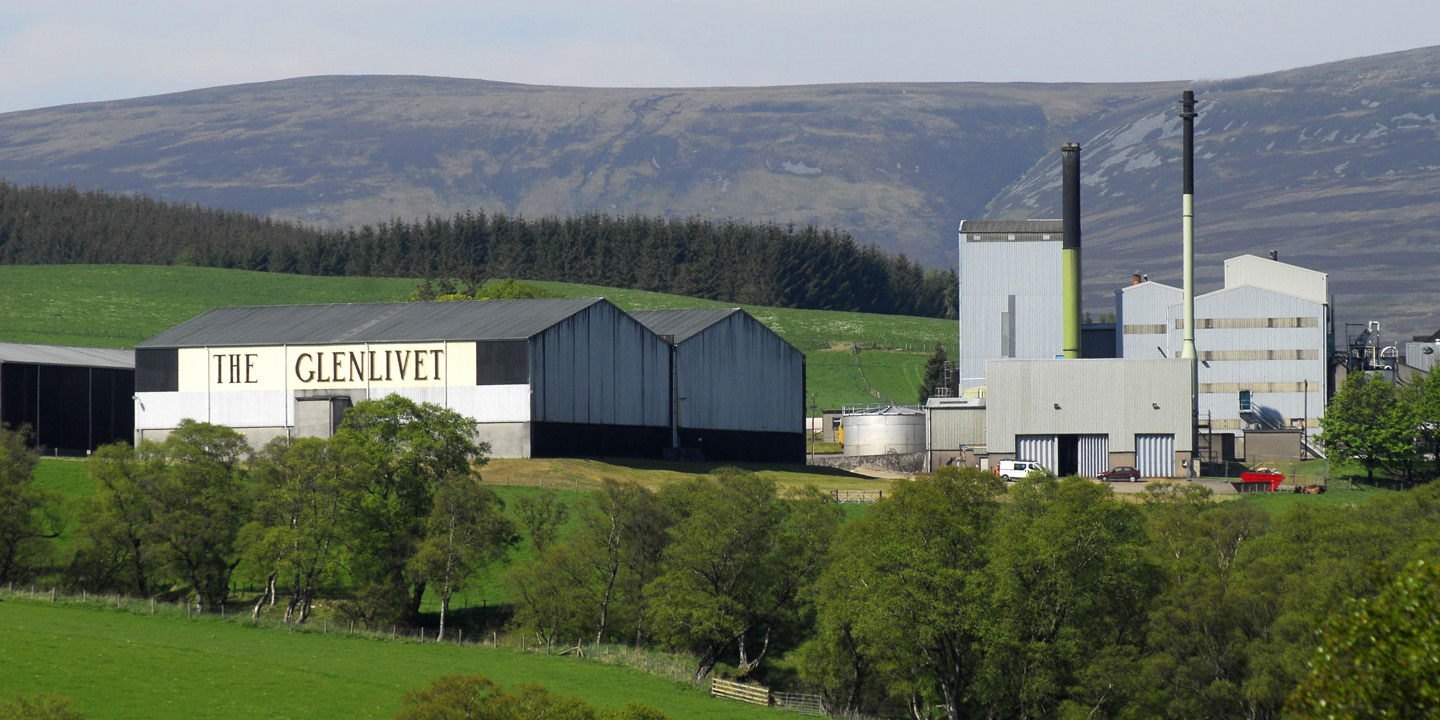About the Distillery: Glenlivet
About the Distillery, Glenlivet, Speyside
Glenlivet is a distinguished, award-winning whisky distillery in Scotland’s Speyside region backed by nearly 200 years of history. Walk through this blog post to see how Glenlivet stands as the original single malt whisky creator and discover more about this famed distillery.
Glenlivet’s Tale – Setting the Standard for Single Malt Whisky
It all began when George Smith, the founder of Glenlivet, cultivated his passion for whisky making and became the first licensed distiller in the Speyside region. When he established his small distillery in 1824 in a prime location that offered pure mountain water from the River Livet and ideal landscape and altitude, Smith’s whiskies became famous in Britain and known for their smooth taste.
Fighting off smugglers and competitors while mastering the art of making his spirits, George fought with perseverance to maintain the Glenlivet distillery well into his old age. Even long after his passing, Smith’s spirit and passion continues living on today in the modern Glenlivet distillery.
When George’s son, John Gordon Smith, inherited his father’s distillery, he fought to protect the Glenlivet trademark as many people were attempting to copy the renowned distillery’s one-of-a-kind creations. After many years, John finally managed to obtain legal rights to the name ‘The Glenlivet.’
And this was how the standard for Speyside single malt whisky was set for all future distilleries.
(Watch the video on Glenlivet’s making here.)
Glenlivet’s 6-Step Whisky-Making Process
Even in the present, the Glenlivet distillery continues making whisky according to George Smith’s original process and their own tweaks and improvements over the years. Here’s the breakdown of this famous distillery’s whisky-creation operation:
Step 1: Malting: Soak barley grains in water for several days until they sprout and heat and dry the grains. Glenlivet avoids using peat in the malting process, which many Scottish distilleries utilize, so that you get only the barley’s natural taste and fragrance for a better quality experience.
Step 2: Milling: Once the barley grains are dried, it’s time to run the grains through Glenlivet’s malt mill to create a coarsely grounded flour known as grist. Through the milling stage, the barley husks are forced open to extract the grains inside to bring out the barley’s true flavor.
Step 3: Mashing: In a mash tun, an essential tool used in Glenlivet’s whisky-making production, the grain is mixed with fresh hot spring water, which comes from Glenlivet’s own Josie’s Well where natural spring water is available. The mash tun converts the starchy grist into a sugary liquid known as wort.
Step 4: Fermenting: Once the wort is produced, it’s transferred to Oregon pine washbacks. These washbacks are basically large containers that help nurture the wort into a frothy beer-like liquid called wash after yeast has been added. Many Scottish distilleries have steel washbacks, but Glenlivet uses Oregon pine washbacks, which adds to the unique taste and aroma of the Glenlivet whiskies.
Step 5: Distilling: Glenlivet’s distillation process has two stages. The first part of the distillation is where the wash made in Step 4 is heated in copper pot stills. The vapors, which have more alcohol content than the wash, produced are cooled and condensed. This creates the first distilled liquid known as low wines.
In the second part of this production process, the low wines are then distilled in spirit stills. The stillman in charge separates the condensed liquid into three parts: the head, the heart, and the tail. The head is the liquid with high alcohol content that is extracted first; the heart is liquid that contains the desired amount of alcohol strength and quality; and the tail is the liquid that can’t be utilized in the scotch-making procedure. The heart is the only liquid that goes into the spirit safe while the head and tail are recycled for other uses.
Step 6: Maturing: In the maturation phase, Glenlivet whisky experts determine the best casks to use. The most commonly used casks in Glenlivet are made from American and European oaks. During maturation, the whisky in the casks gradually evaporates, but the liquid gold left behind is what will be bottled and sold to Glenlivet fans around the world.
The extra ‘step’ that helps Glenlivet whiskies receive worldwide recognition is the expertise and experience of the professionals who work at this distillery. Their knowledge and passion for selecting the finest whisky to sell to liquor lovers around the world also boost Glenlivet’s reputation.
Some of Glenlivet’s whiskies that the Whisky Foundation carries include:
Glenlivet’s Distillery Tours
Glenlivet offers free seasonal distillery tours from March to November, and you can book tours through their site. . You’ll learn more about the distillery and get a behind-the-scenes look at what goes into producing one of the greatest whiskies in the world. Glenlivet also provides other types of tours (paid) so you can have a more elaborate and exciting experience.
One of these exclusive tours is called the Legacy Tasting Experience where you’ll be able to sample rare drams, learn in-depth knowledge about them, and take home a special gift. Another tasting event you can enjoy at Glenlivet is the Spirit of the Malt Tasting Tour where you can sip whisky straight from the casks and savor a variety of whiskies during a sampling session.
Bonus: For a unique, outdoorsy type of tour around the Glenlivet distillery location, you can walk on the three historical trails that surround the area: the George Smith Smugglers Trail; the Robbie MacPherson Smugglers Trail; and the Malcolm Gillespie Smuggler Trail. Learn more about these interesting nature trails here.
If you’re visiting Scotland or want to go exclusively for the tour, be sure to book ahead of time! The distillery also has a cafe with light and satisfying refreshments and gift shop that you can browse through for a souvenir to take home.



